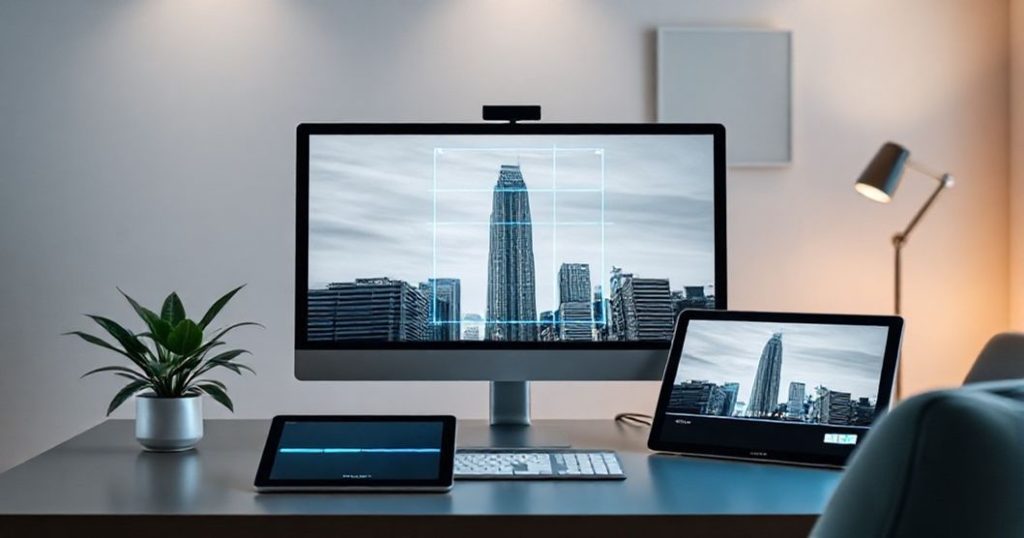Fix Perspective Distortion in AI-Generated Images
Perspective distortion in AI-generated images can be a significant issue, affecting the overall quality and realism of the output. This problem arises when the AI model misinterprets the perspective cues in the input prompt, leading to distortions that can make the image look unnatural or unappealing. Understanding how to fix perspective distortion is crucial for graphic designers, digital artists, and marketers who rely on AI image generation tools for their creative projects.
The first step in addressing perspective distortion is to comprehend how AI image generators process and interpret text prompts. These models are trained on vast datasets of images and their corresponding text descriptions, enabling them to learn patterns and relationships between visual and linguistic elements. However, the complexity of perspective, which involves the way objects appear to shrink or change shape as they recede into the distance, can be challenging for AI models to fully grasp, especially when the input prompt lacks specific perspective-related details.
One effective strategy for minimizing perspective distortion is to craft detailed and descriptive prompts that include specific information about the desired perspective. For instance, instead of simply prompting the AI to generate an image of a room, you could specify the type of room, the time of day, the lighting conditions, and the perspective from which the room should be viewed. The more context you provide, the better the AI can understand your vision and produce an image that meets your expectations.
Another approach to correcting perspective distortion involves post-processing techniques. Once you have generated an image, you can use photo editing software to manually adjust the perspective, removing distortions and enhancing the overall appearance of the image. This might involve using tools like the perspective warp or the lens correction filter to fine-tune the image’s geometry and ensure that it looks as realistic and professional as possible.
Understanding Perspective in AI-Generated Images
Perspective in art and photography refers to the way objects appear to change size and shape as they recede into the distance. In real-world scenes, perspective is what creates a sense of depth and distance, allowing viewers to perceive the three-dimensional arrangement of objects within a two-dimensional image. Achieving correct perspective is essential for creating realistic and engaging visuals, whether you are working with traditional media or using AI image generation tools.
In the context of AI-generated images, perspective can be particularly challenging due to the limitations of current AI models in fully understanding and replicating the complexities of human visual perception. While AI can generate images that are often astonishingly realistic, they may lack the nuanced understanding of perspective that a human artist would bring to a piece. This is why it’s crucial for users to provide clear and detailed prompts and to be prepared to make adjustments during the post-processing stage to ensure that the final image meets their creative vision.
Icebox AI, a free and powerful AI image generator, offers users a unique opportunity to explore the potential of AI in visual content creation while minimizing the issues associated with perspective distortion. By leveraging the platform’s advanced AI technology and following the strategies outlined in this guide, creators can produce high-quality images that are not only visually stunning but also accurately capture the desired perspective, enhancing the overall impact and effectiveness of their visual content.
Practical Strategies for Correcting Perspective Distortion
Correcting perspective distortion in AI-generated images requires a combination of pre-processing strategies, such as crafting detailed prompts, and post-processing techniques, such as manual adjustments using photo editing software. The following steps provide a practical guide to minimizing perspective distortion and achieving professional-quality results with your AI-generated images.
1. Craft Detailed Prompts: The quality of your output is directly related to the quality of your input. Providing the AI with as much detail as possible about the desired perspective, including the viewpoint, the subjects, and the background, can significantly reduce the likelihood of perspective distortion.
2. Use Reference Images: Including reference images with your prompt can help the AI better understand your vision, especially when it comes to complex scenes or specific perspectives. This can be particularly useful for architectural or interior design visualizations where precise perspective is critical.
3. Post-Processing Adjustments: Even with the best prompts, some degree of perspective distortion may still occur. Using photo editing software to make manual adjustments can help correct these issues, ensuring that the final image looks professional and polished.
4. Experiment with Different AI Models: Different AI models may handle perspective in unique ways, depending on their training data and algorithms. Experimenting with various models can help you find the one that best suits your needs and minimizes perspective distortion.
Conclusion
Fixing perspective distortion in AI-generated images is a multifaceted challenge that requires a deep understanding of both the creative possibilities and the technical limitations of AI image generation tools. By combining detailed prompts, strategic use of reference images, and thoughtful post-processing adjustments, creators can overcome the hurdles of perspective distortion and unlock the full potential of AI in visual content creation. Whether you are a seasoned professional or just starting to explore the world of AI art, mastering the skills to correct perspective distortion will elevate your work, enhancing its realism, engagement, and overall impact.
As AI technology continues to evolve, we can expect to see significant advancements in the ability of AI models to understand and replicate complex visual phenomena like perspective. Until then, the strategies outlined in this guide offer a powerful toolkit for anyone looking to push the boundaries of what is possible with AI-generated images, creating visuals that are not only stunning but also meticulously crafted to capture the perfect perspective.
Start creating your own stunning, distortion-free AI-generated images today with Icebox AI, the free and powerful AI image generator designed to unleash your creativity and bring your vision to life.



